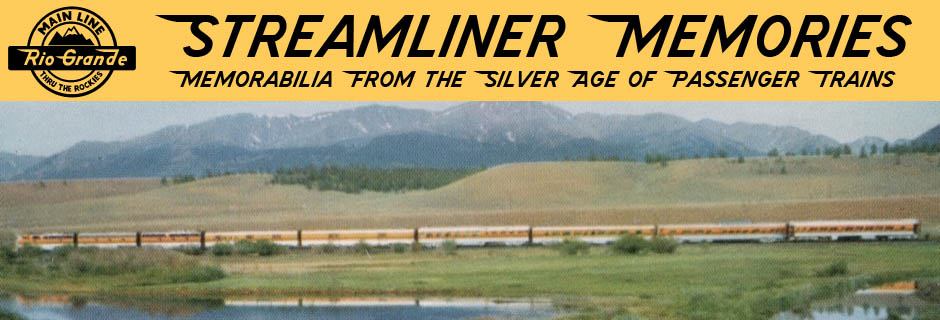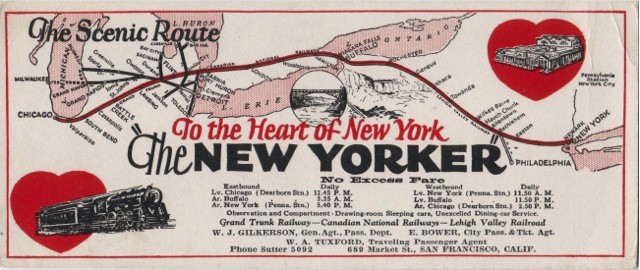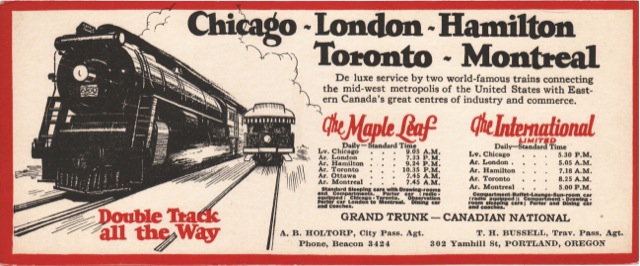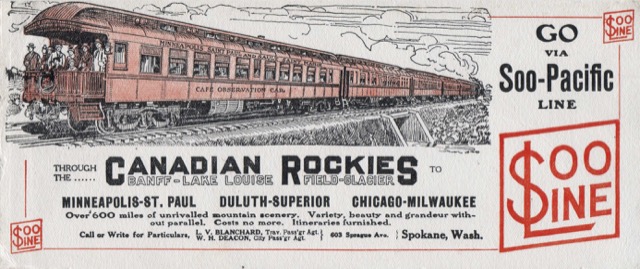Canadian National Railways was created in 1918 to manage a group of failed or failing government-sponsored railroads including the Canadian Northern, Intercolonial, and National Transcontinental. In 1920, it inaugurated the Continental Limited, a transcontinental train from Montreal to Vancouver that went over the tracks of what had previously been five different railroads.

Click images to download PDFs of these blotters, which are about 0.4 to 0.6 MB in size. These blotters are all from the Dale Hastin collection.
In 1924, Canadian National inaugurated a Chicago-New York train called the New Yorker that also used the tracks of CN subsidiary Grand Trunk from Chicago to Sarnia and the Lehigh Valley Railway from Niagara Falls to New York. Originally, the New York-to-Chicago counterpart was originally called the Chicagoan, but since that name isn’t on this blotter, the blotter must be from a later year. Requiring eight more hours to complete the trip than New York Central and Pennsylvania railroad’s fastest trains, the New Yorker was never a competitor for Chicago-New York traffic but must have served people going from Chicago or New York to Canada.
The New Yorker didn’t last long, but in 1927 Canadian National started a new train, the Maple Leaf, which went from Chicago to Toronto. This blotter doesn’t say so, but some cars were taken off the train at Hamilton, Ontario and continued to New York on the Lehigh Valley.
CN’s rival Canadian Pacific owned 56 percent of the Minneapolis, St. Paul and Sault St. Marie, known as (and, since 1961, officially named) the Soo Line. CP had a long-standing rivalry with the Great Northern, and one of the ways it competed was to offer passenger service from Chicago and the Twin Cities to Vancouver. Called the Soo-Pacific, during some years in the 1920s a branch to Spokane, deep in Hill territory, was called the Soo-Spokane.



